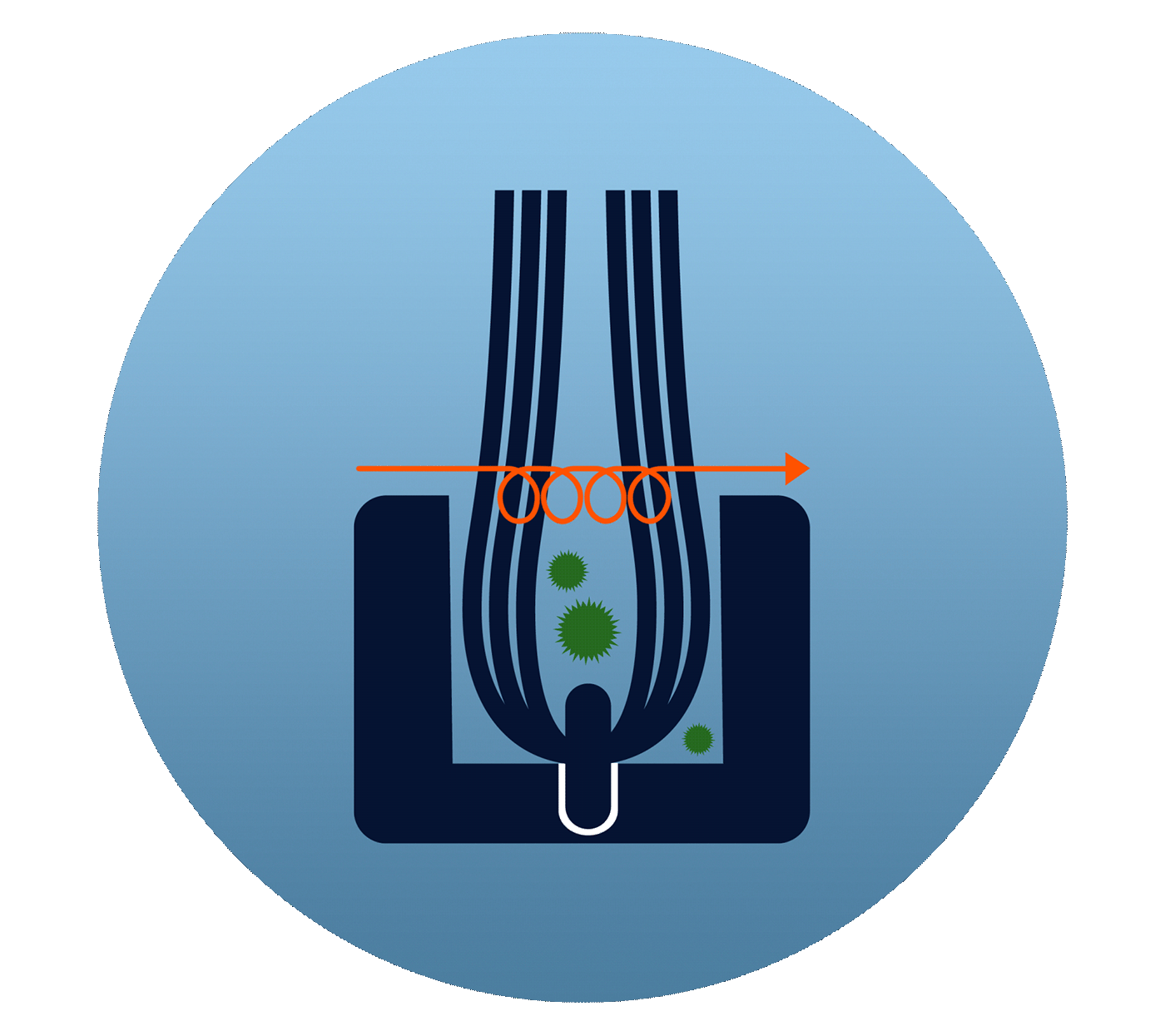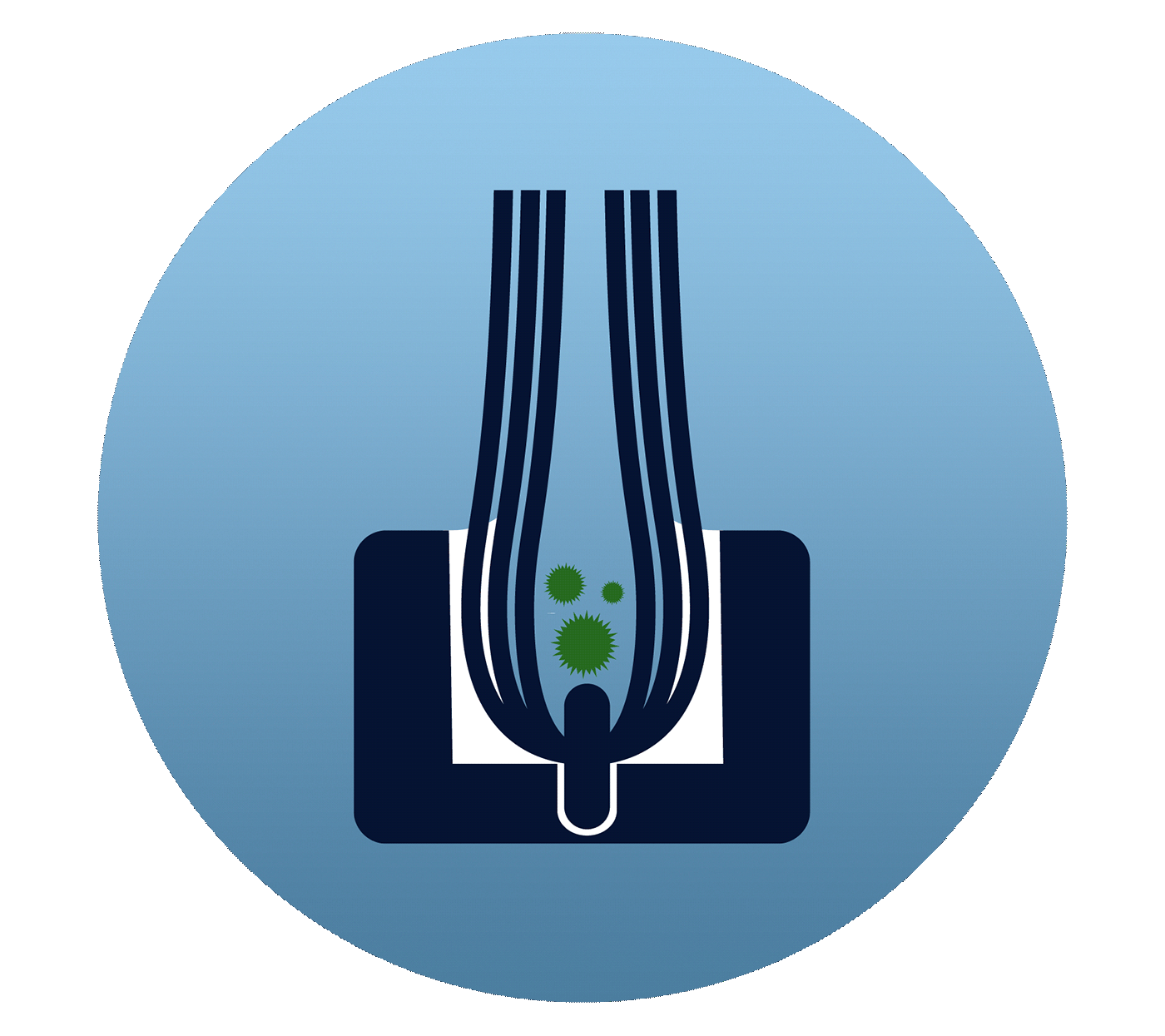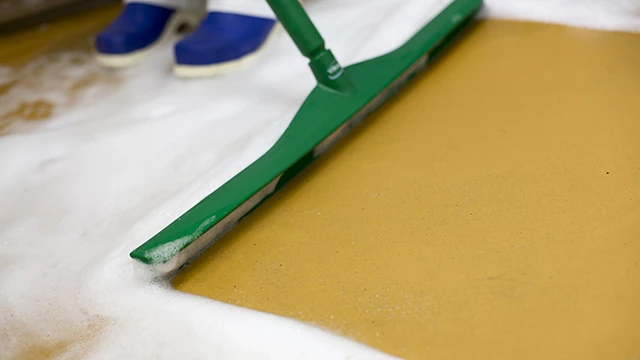Find out how to overcome this common cleaning challenge
One of the most frustrating issues when using brushes for cleaning is that the bristles can become clogged with dirt, debris, and food particles. This problem is not limited to any specific type of soil or substance—it happens across the board. When this occurs, the effectiveness of your brush and your overall cleaning efficiency drop significantly.
If you don’t clean your brushes thoroughly between uses, the clogging will only worsen over time, making it more difficult and time-consuming to maintain them. Worse still, uncleaned brushes can become a breeding ground for bacteria and pests, posing serious hygiene risks. A study by Campden BRI found that 47% of cleaning tools tested were contaminated with Listeria Monocytogenes. This highlights just how critical it is to properly clean your cleaning equipment.
Major global food safety standards like BRC v7 and FSSC 22000 also emphasize the importance of keeping cleaning tools clean. Not maintaining them properly can lead to serious consequences—ranging from product recalls and financial losses to harm to consumers and non-compliance during audits.
Safeguard your brand and business
When it comes to ensuring food safety through proper cleaning tools, choosing and maintaining the right equipment is essential.
Choosing the right tools
Research conducted by Vikan and independent labs, published in the Journal of Hygienic Engineering and Design, showed that before the introduction of Ultra Safe Technology (UST), all types of food industry brushes had major hygiene design flaws. These brushes were difficult to clean, leading to contamination risks. UST introduced two key improvements to enhance cleanability and prevent bristle clogging:
1. UST technology eliminates deep holes and crevices found in traditional drilled, stapled, and resin-set brushes. This removes a major source of contamination.



2. The unique bristle pattern not only improves cleaning performance but also makes the brush easier to clean between bundles, significantly reducing the risk of clogging.
Maintaining your tools
Vikan recommends conducting a risk assessment to determine the best cleaning procedure for your tools. Factors such as the type of food you produce, the surfaces you clean, whether the cleaning is wet or dry, and whether the tool comes into direct contact with food all play a role in determining the appropriate method.
The decision tree below provides a general guide to help you think through the process of cleaning your tools effectively.
For more detailed guidance, we recommend downloading our White Paper ‘Optimising Food Safety Through Good Cleaning Tool Maintenance’ or reaching out to your local Vikan representative.
We’re here to help
Let us assist you in solving your cleaning challenges. Why not try Ultra Safe Technology and see how it can improve your food safety, cleaning efficiency, and audit compliance?
We offer free samples of UST brushes and brooms. Contact our customer service team for more information.
Recent blog posts

Buckets, buckets everywhere
Don’t rush. Take a breath and start paying careful attention to the buckets used in the food and beverage sector.

Which squeegee do I choose?
Finding the right Vikan squeegee for the right job helps you raise hygiene standards as well as boosting your employees’ job satisfaction.
Outdoor Portable Wood Fired Pizza Oven,12 Inch Wood Fired Pizza Oven,16 Inch Wood Fired Pizza Oven
GFTOP , https://www.ovenchief.com
